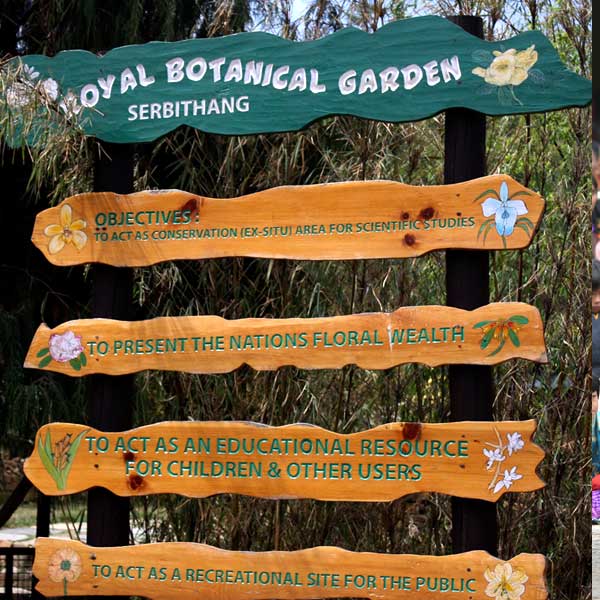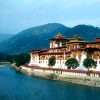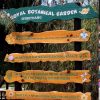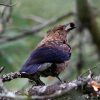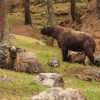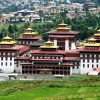Description
Day Wise Tour Plan
After arriving at Paro International Airport, you will be welcomed by your dedicated certified guide, and after immigration & baggage collection you will proceed to your hotel in Thimphu, capital of Bhutan.
After refreshment you will start your trip according to below itinerary with certified guide and dedicated vehicle.
Folk Heritage Museum
Folk Heritage Museum was established in 2001 and provides visitors and tourists with fascinating insights into the Bhutanese material culture and way of life. The Folk Heritage Museum is set inside a three storied, 19th century traditional house. The museum gives you a glimpse of the traditional Bhutanese lifestyle, in addition to artifacts from rural households.
Tashichho Dzhong
It is a Buddhist monastery and fortress in the city of Thimphu Bhutan, on the western bank of the Wang Chu River. This was built in 1641 Zhabdrung Ngawang Namgyal acquired it but finding it too small, he built another one, known as the lower Dzong.Tashichho Dzong has been the seat of the government since 1952 and presently houses the throne room and offices of the king, the secretariat and the ministries of home affairs and finance.
National Memorial Chorten
Memorial chorten has been designed to present it as “one of the most visible religious structures in Thimphu”. The Memorial Chorten, in the heart of the city, is designed is a Tibetan style chorten, also called as the Jangchup Chorten, patterned on the design of a classical stupa. The feature that is distinct here is the outward flaring of the rounded part to give the shape of a Vase, unlike a dome shape. National Memorial chorten is an extraordinary example of Buddhist architecture and artwork with its gorgeous paintings and intricate sculptures. You will find elderly Bhutanese people circumambulating this throughout the day.
Overnight Hotel in Thimphu
National institute of Zorig Chusum
The Institute Zorig Chusum falls under the national technical training authority which was created in 1990 to improve the quality of vocational training. The art taught today, in Bhutan was introduced in the fifteenth century, by Terton Pema Lingpa. These traditional crafts represent hundreds of year’s knowledge and ability that has passed down the generations. Here you can see the amazing skills for art and craft.
National Library
The National Library of Bhutan (NLB) was established in 1967 under the patronage of HM Queen Ashi Phuntso Choden (1911–2003), with a small collection of precious texts, for the purpose of “Preservation & Promotion of the rich cultural & religious heritage” of Bhutan. This is located in the Kawajangsta area of Thimphu, just above the Royal Thimphu Golf Course, nearby Bhutan Folk Heritage Museum.
Kuenselphodrang (Buddha Point)
Buddha Dordenma is massive statue of Shakyamuni measures in at a height of 51.5 meters, making it one of the largest statues of Buddha in the world. The statue is made of bronze and is gilded in gold. 125,000 smaller Buddha statues have been placed within the Buddha Dordenma statue, 100,000 8 inch tall and 25,000 12 inch tall statues respectively. Each of these thousands of Buddhas has also been cast in bronze and gilded. The throne that the Buddha Dordenma sits upon is a large meditation hall.
The Buddha Dordenma is located atop a hill in Kuensel Phodrang Nature Park and overlooks the Southern entrance to Thimphu Valley. The statue fulfills an ancient prophecy dating back to the 8th century A.D that was discovered by TertonPemaLingpa (Religious Treasure Discoverer) and is said to emanate an aura of peace and happiness to the entire world.
Takin Preserve Natioal Park
Motithang Takin (National animal) Preserve national park is located in the Motithang in Thimphu, a wildlife reserve area for Takin. This was started as a mini zoo; later the King of Bhutan felt that it was improper for a Buddhist country to confine animals for religious and environmental reasons. He therefore ordered the release of the animals and the closure of the mini-zoo on converted into a preserve. The reason for declaring takin as a National Animal of Bhutan on 25 November 2005 (Budorcastaxicolor) is attributed to a legend of the animal’s creation in Bhutan in the 15th century by Lama. The preserve also holds a few sambar and barking deer.
The Jungshi Handmade Paper Factory
It is located just 1 km far from Thimphu town. The factory uses the bark of two tree species, the Daphne tree and Dhekap tree in the manufacture of traditional paper. You can observe the entire process of producing handmade paper using ancient traditional method that has been practiced for generations. You can even try your hand at this ancient craft and make some paper of your very own as a souvenir. The Jungshi paper factory continues to preserve and promote this age-old Bhutanese tradition. It also produces various other products, such as stationery, lampshades, envelopes, calendars and other items made from traditional Bhutanese paper. You can click some snaps here for good memories.
National handicrafts emporium
The National Handcrafts Emporium is a state run Handicrafts showroom in 4 different cities of Bhutan. The emporium is run by the National Woman’s Association of Bhutan as a Non-Government Organization that is run under the royal supervision of Her Royal Highness Ashi Sonam Choden Wangchuk. The Handicrafts Emporium showcases the finest handicrafts of the country and supports one of Bhutan’s most important income generating activities. The products on sale at the emporium include; locally manufactured hand woven fabrics, wooden masks, cane and bamboo products, traditional wooden utensils such as cups and bowls, handmade paper, statuettes, prayer wheels etc.
National institute of traditional medicine services
In 1967 the king directed the Health Department of Bhutan to establish a traditional medicine system for the welfare of Bhutanese people and to preserve the Bhutanese traditional culture. An “Indigenous Dispensary” was opened on 28 June 1968 at Dechencholing, Thimphu, staffed by doctors trained in Tibet. It was moved to its present site in Thimphu in 1979 and renamed the National Indigenous Hospital, then renamed the National Institute of Traditional Medicine in 1988, and then upgraded to the Institute of Traditional Medicine Services (ITMS) in 1998.
Weekend market – Thmphu
The Weekend Market occupies stalls on both banks of the Wang Chhu, just north of Changlimithang Stadium. Vendors from throughout the region start arriving on Thursday and Friday, and remain until Sunday night. You can buy wooden bowls, mala beads, printing blocks, amulets, yak tails and prayer wheels, some of which are made in Nepal.
Overnight Hotel in Thimphu
Simtokhadzhong
It is a small dzong located about 5 km south of the capital of Thimphu; this was built in 1629 by NgawangNamgyal. Simtokha Dzong known as SangakZabdhonPhodrang (Place of the profound meaning of secret mantras), it is often said the first Dzong built in Bhutan. It is the home of the institute for language & culture studies, the students are both monk & lay people. You can find countless statues and paintings of various Buddhas, deities and religious figures including The Eight Manifestations of Guru Rimpoche, Jampelyang the Bodhisattava of Wisdom, ShakyaGyalpo the Buddha of Compassion and many more, all carved and painted in exquisite detail.
Dochula Pass
Dochula Pass known as the Druk Wangyal Chortens- the construction of these 108 chortens was commissioned by the eldest Queen Mother, Her Majesty Ashi Dorji WangmoWangchuk. The pass is also popular spiritual destination for both locals and tourists because an important (Druk Wangyal Lhakhang) temple is located on the crest of Dochula pass. It offers a stunning 360 degree panoramic view of Himalayan mountain range. The view is especially scenic on clear, winter days with snowcapped mountains forming a majestic backdrop to the tranquility of the 108 chortens gracing the mountain pass. Bhutanese families enjoy visiting the pass during holidays and weekends to picnic and simply enjoy the scenery. For tourists this is ideal location to capture beautiful pictures of Himalayan mountain range during clear, warm days.
Ta Dzong (National Museum)
Ta-Dzong, an ancient watchtower, which now houses the National Museum. It is located about five and a half kilometers away from the main town of Paro and 500 feet from the Rinpung Dzong located below the museum. Cameras are not allowed inside the museum, but you can photograph the ta dzong and surrounding grounds.
Rinpung Dzhong (Paro Dzong)
The construction of the Rinpung Dzhong (Paro Dzong) began in 1644 on the order of Zhabdrung Ngawang Namgyal, the unifier of modern-day Bhutan. Unlike most of the other dzongs in Bhutan, it survived the massive 1897 earthquake though it was damaged by fire in 1906. Paro Dzong’s full name is Rinpung Dzong, which means ‘the fortress of the heap of jewels’.
Kyichu Lhakhang
Kyichu Lhakhang was originally a small structure at the time of its establishment in the 7th century by the Tibetan Emperor Songtsän Gampo. It is considered to be one of the 108 border taming temples he built. It is believed the temple was visited by Padmasambhava in the 8th century and he concealed many spiritual treasures here. Further the temple was looked after by the Lhapa Kagyu tradition and that during the 13th century it was handed over to a descendant of Phajo Drugom Zhigpo’s son Nyima. There is a belief that the two orange trees in the courtyard of Kyichu Lhakhang bear fruit throughout the year.
Overnight Hotel in Paro
Tiger Nest Monastery
Tighter Nest Monastery (Taktsang Lhakhang) is Bhutan’s most iconic landmark and religious site. The name Taktsang translates to “The Tiger’s Nest”. This temple is one of the most holy sites in the kingdom. It is believed that Padmasambhava (Guru Rinpoche) flew to this location from Tibet on the back of a tigress from Khenpajong. This place was consecrated to tame the Tiger demon, was first built in 1692 at a cave where Guru Rimpoche meditated in a cave, in the 7th century A.D. for 3 years, 3 months, 3 days and 3 hours in order to subdue evil demons residing within it. The cave has been considered a sacred site ever since and many famous saints have travelled to meditate in it.
In order to arrive at the temple you must trek for around 2-3 hours through beautiful, shady pine forests that is colorfully festooned with moss and prayer flags. On many days, clouds shroud the monastery and give an eerie feeling of remoteness. No trip to Bhutan would be complete without a visit to this remarkable heritage site.
Drukchoeding
Drukchoeding also known as Tshongdoe Naktshang, the quiet and peaceful Druk Choeding is the town temple. It was built in 1525 by Ngawang Chhogyel (1465–1540), one of the prince-abbots of Ralung in Tibet and an ancestor of the Zhabdrung Ngawang Namgyal. The main statue is of a seated Jampa (future Buddha). Also present are the local protectors Gyenyen, Jichu Drakey and Hong Gyelri, surrounded by a fearsome collection of old Bhutanese
Dumtse Lhakang
To the west of the road leading to the National Museum is Dumtse Lhakhang, an unusual chorten-like temple that was built in 1433 (some sources say 1421) by the iron-bridge builder Thangtong Gyalpo. The temple was built to subdue a demoness and so is chained firmly to the ground. Its three floors represent hell, earth and heaven, and hold some of the finest murals in Bhutan. It’s essential to bring a good torch. Your travel agency may need to have Dumtse listed on your permits, so mention you’d like to stop here in advance. Overnight Hotel in Paro
Overnight Hotel in Paro
Haa valley
Haa valley is located about 3 hours west of Paro. The Drive from Paro to Haa valley takes you up to the Chele-La pass which is located at a height of about 3800 meters. Make sure you ask you drive to stop the car here so you can enjoy a beautiful view of Bhutan’s 2 highest and best known peaks the Jichu Drake and Mount Jumolhari, some times of a clear day you might be able to catch a glimpse of Mount Kunchenjunga the 3rd highest mountain in the world from this view point. From there we will descend down into the Haa Valley down to the town of Haa.
The Haa valley is one of the most isolated and least populous districts of the country. The Haa valley is also home to a Indian army base that helps protect the border of Bhutan from Chinese incursions. There are many small temples and monasteries in the district with the most important being the Lhakhang Karpo( White Temple) and the Lhakhang Nagpo ( Black Temple). The Lhakhang Nagpo’s central shine is said to be identical to the central shrine of the Jowo Temple in Lhasa, Tibet. Legend has it that the Karpo temple was constructed along with the assistance of the Local deities, as a result of this divine intervention it was known as the Hay (Surprises in Dzongkha) and later on Haa. After spending the day in the valley we will return back to Paro for the night.
Overnight hotel in Paro
Today your trip is over and after breakfast your guide will take you to Paro International Airport to board your departure flight, and you return back with lots of good memories.

